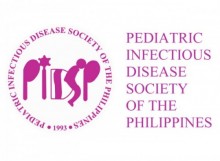A Comparative Study of Pediatric Patients with Complete vs. Incomplete Kawasaki Disease in a Tertiary Hospital: An Eleven Year Review
Janine G. Malimban, M.D., Robert Dennis J. Garcia, M.D. and Maria Ronella FranciscoMallari, M.D.
ABSTRACT
Introduction: Kawasaki disease (KD) is the leading cause of acquired heart disease in childhood, but its diagnosis remains challenging since a significant number of cases do not meet the diagnostic criteria (Incomplete KD). This may delay the diagnosis and initiation of treatment, and increase the risk of morbidity from coronary artery complications.
Objectives: This study compared the clinical profile and treatment outcomes of children with complete and incomplete KD.
Methods: This is a cross-sectional, retrospective study of pediatric patients diagnosed with KD and admitted in a tertiary hospital from January 1, 2010 to December 31, 2020. Demographics, clinical manifestations, laboratories, 2D echocardiography (2DE) findings and treatment outcomes were obtained by review of medical records and analyzed using descriptive statistics.
Results: Among 135 patients studied, 71% were classified as Incomplete Kawasaki Disease. Majority (89%) were children more than 1 year old and predominantly male (55%). Five classic features, other than fever, were more frequent in complete KD – bilateral bulbar conjunctivitis, mucosal changes in the lip and oral cavity, polymorphous exanthem, changes in extremities, and cervical lymphadenopathy. Fever (100%), conjunctivitis (100%), rashes (97%) and oral changes (90%) were the most common findings in complete KD, while fever (100%), rashes (56%), conjunctivitis (46%) and oral changes (35%) were noted in incomplete KD. Higher CRP (167 mg/L vs. 100 mg/L)
and lower albumin levels (30 g/L vs. 38 g/L) were seen in complete KD. Coronary artery dilatation (56% vs. 48%) was frequently detected in both complete and incomplete KD. Majority (96%) of cases received only one dose of IVIG and 4% needed additional treatment with methylprednisone.
Conclusion: The five principal features of KD other than fever, elevated CRP and lower albumin levels were significantly more common in complete cases. No significant differences in the demographics and 2DE findings of children with complete and incomplete KD were observed.
Keywords: Incomplete and Complete Kawasaki Disease, Acquired Heart Disease, Coronary Artery Dilatation and Aneurysms
https://doi.org/10.56964/pidspj20222302008
| View Full Article in PDF format |
Journal 2022 Vol.23 No.2 Original Articles 3pidsp@uplink.com.ph2022-12-04T10:31:30+00:00
